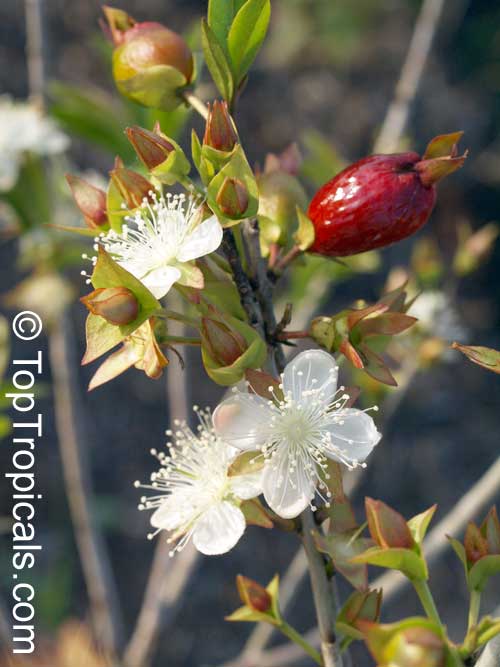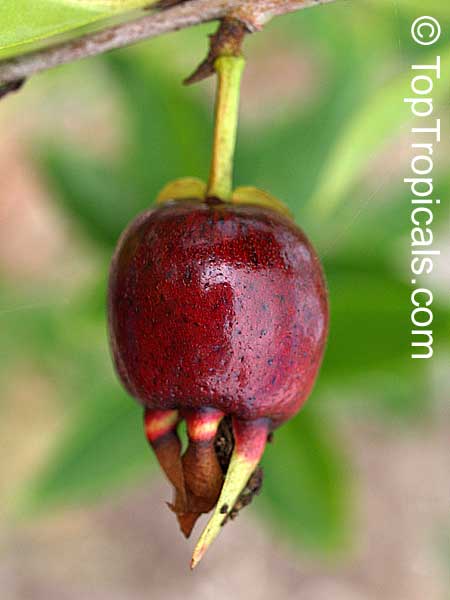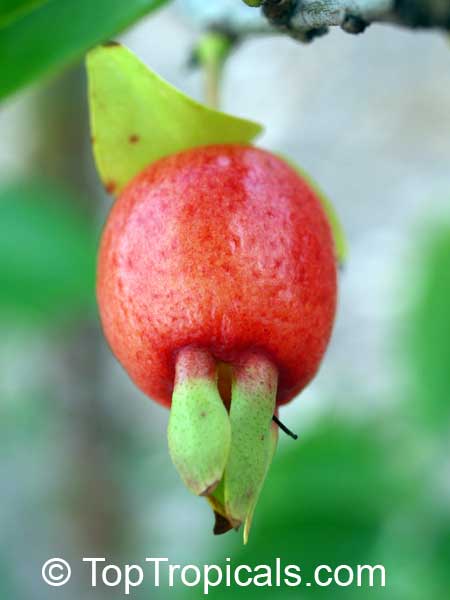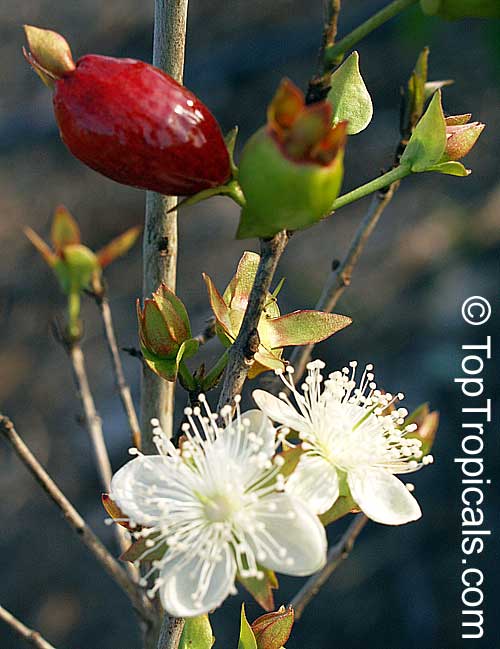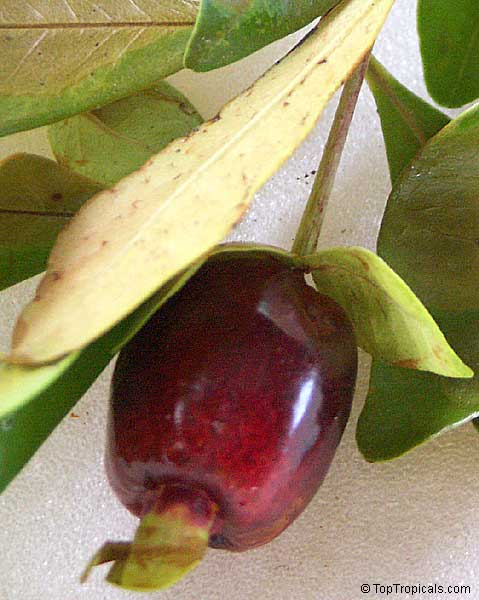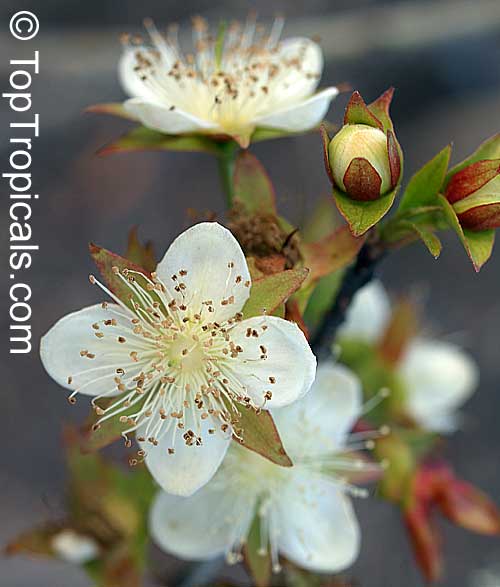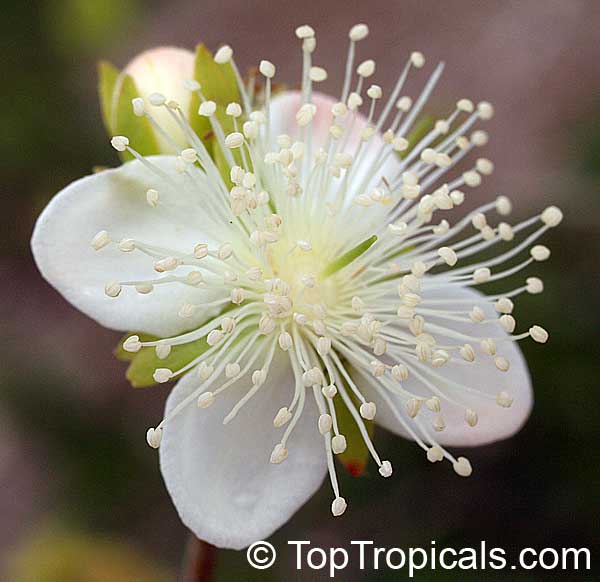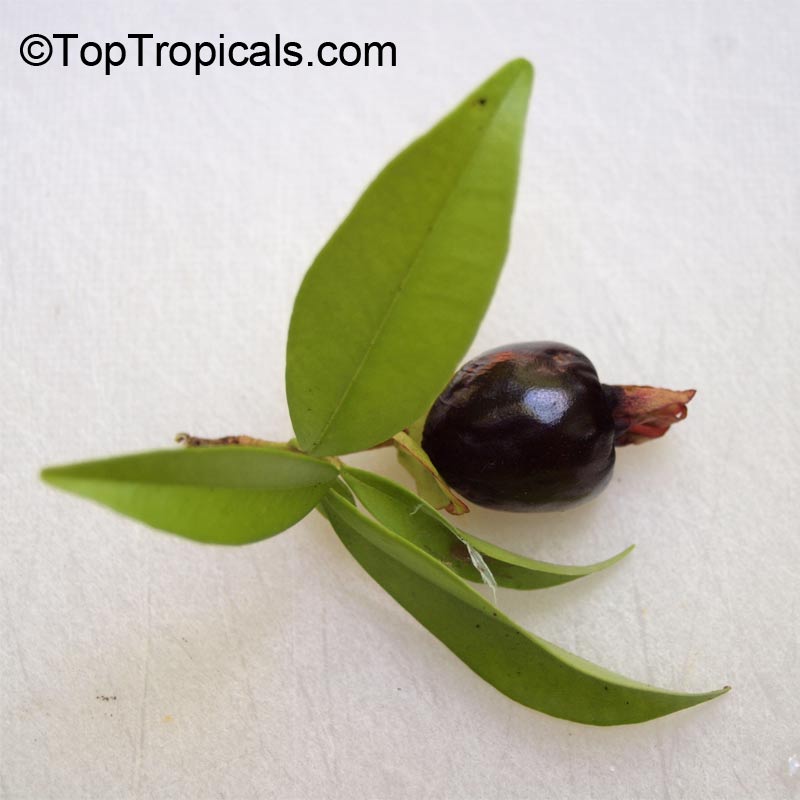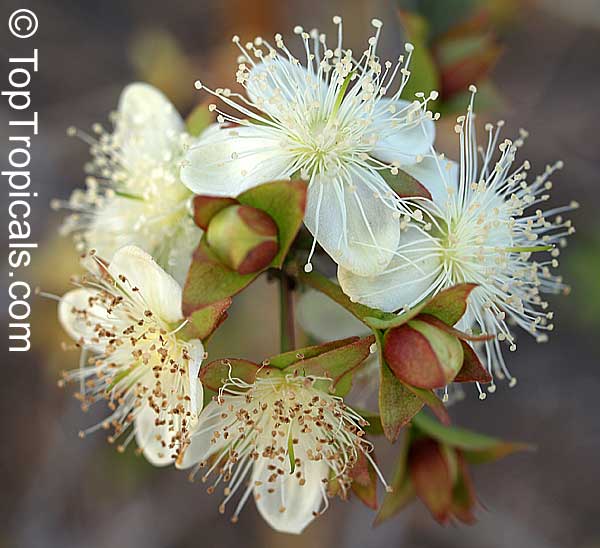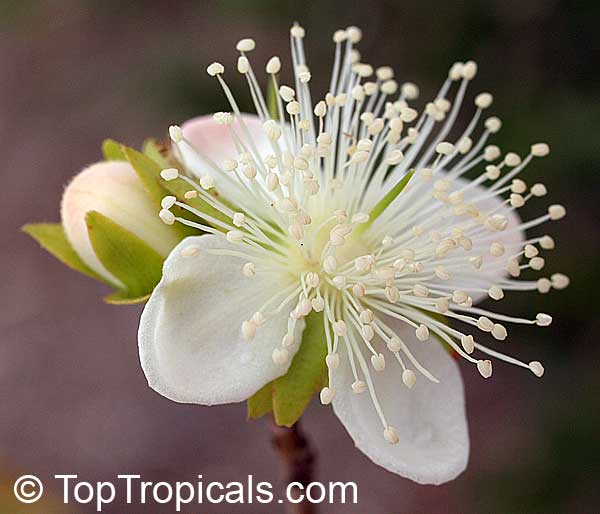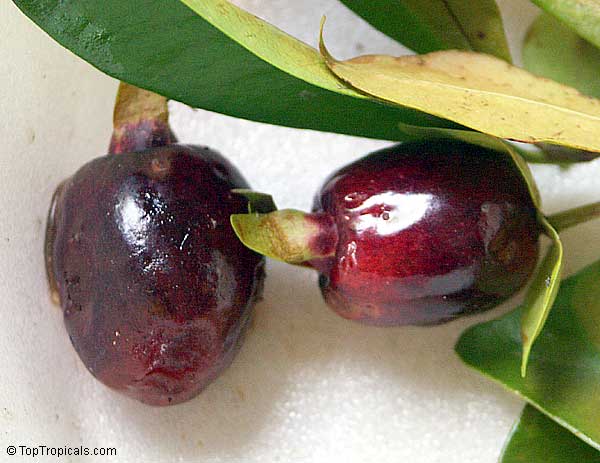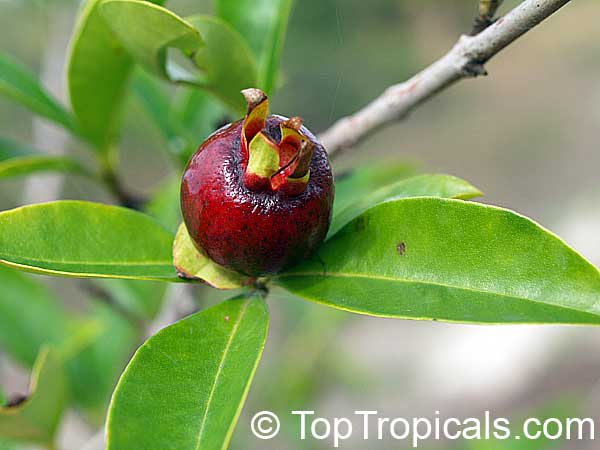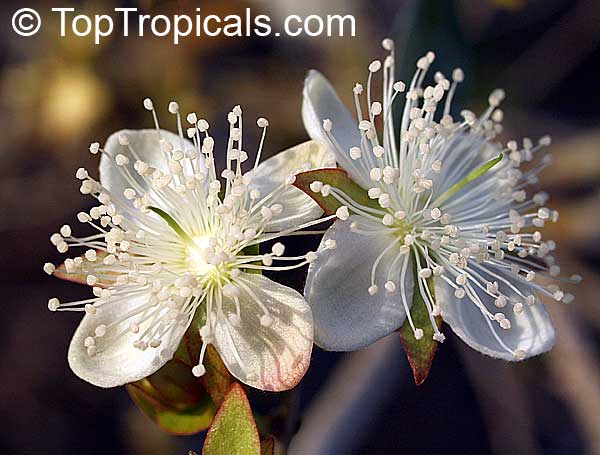Eugenia involucrata (Cherry of the Rio Grande)
Top Tropicals Plant Encyclopedia
Botanical names: Eugenia involucrata, Eugenia aggregata
Common names: Cherry of the Rio Grande, Cere Jodo Rio Grande
Family: Myrtaceae
Origin: Brazil
Hardiness: 30°F







Eugenia aggregata (Cherry of the Rio Grande) is a small tree or shrub that originates from Brazil, growing between 10-20 ft tall with 2-3 inch long glossy, waxy, dark green leaves that have a center fold. The bark on mature plants peels off, creating a smooth, attractive trunk. It blooms in the spring and continues fruiting through the summer. The edible fruits are dark red to purple, one inch long and oblong, with a full cherry-like flavor. They are excellent fresh, frozen, and used in jams, jellies, and juices.
The Cherry of the Rio Grande is a slow grower, usually adding 2 to 3 feet of height per year. It's best trained as a bush or a small tree that can fit into limited space landscapes, and can even be grown in a container. Propagation is done through seeds and takes 4-5 years to produce fruit. The plant is fairly drought tolerant, but needs regular watering when flowering and fruiting, and should not be over-irrigated as it can cause root resiliency issues. It grows best in slightly acidic soil and is able to tolerate salt spray. The cherry of the Rio Grande is quite hardy, able to handle temperatures as low as the mid-20s F when it is a mature plant, though younger plants should be protected from frost.
The Cherry of the Rio Grande is packed with benefits. It is a rich source of vitamins A and C, iron, calcium, and dietary fiber. It is also believed to help treat throat issues and reduce inflammation. The fruit can grow in clusters of up to 10 and the plant can produce up to 20-50 lbs per year.
Similar plants: Eugenia involucrata (Cherry of the Rio Grande)
- Blepharocalyx salicifolius (Murta)
- Eugenia brasiliensis (Grumichama)
- Eugenia confusa (Red Berry Stopper)
- Eugenia foetida (Spanish Stopper)
- Eugenia luschnathiana (Pitomba)
- Eugenia neonitida (Pitangatuba)
- Eugenia pyriformis (Uvaia)
- Eugenia reinwardtiana (Beach Cherry)
- Eugenia rhombea (Red Stopper)
- Eugenia sp. (Eugenia)
Recommended Fertilizer: SUNSHINE C-Cibus - Crop Nutrition Booster
SUNSHINE-Honey - sugar booster
This is a hot seller, limited quantities. This is small plant. Demand is very high, these plants sell faster than we can grow them bigger. Please do not order if size matters to you. Contact us before making purchase if you have any questions
Recommended Fertilizer: SUNSHINE C-Cibus - Crop Nutrition Booster
SUNSHINE-Honey - sugar booster

